There is no doubt that Chinese people love seafood and consume it in enormous quantities. Clearly marketing seafood to China is a lubricating way for numerous seafood businesses. According to the statistics, the average Chinese citizen is expected to eat 2.86kg worth of fish and seafood annually by 2023. The revenue in the fish & seafood market in China reached 88.09 billion dollars in 2023, with an annual growth rate of 8.06%.
In this blog post, we will take a look at China seafood market, market trends, and consumer behaviors and present some strategies to best sell seafood to Chinese consumers. Let’s get started!
Need a cost effective TP (Tmall Partner) to sell in China?
We are an Official Tmall Partner e-commerce Agency. Our Services: E-Commerce, Search Engine Optimization, Advertising, Weibo, WeChat, WeChat Store & PR.
China Imports of Seafood Are Rising
The rising import levels can date from China’s voracious appetite for fish, crustaceans, and seemingly the sea’s entire bounty.
As mentioned in the introduction, The seafood market in China reached 88.09 billion dollars in 2023, which means that China is the world’s leader in this sector. The market is expected to reach 129.84 billion dollars by 2028.

What is interesting is the fact, that 1/3 of total sales are done online, with this number expected to grow to 36.5% in 2025. It’s a piece of important information to all producers on the wholesale market, interested in selling their products on e-commerce platforms.
The high demand for seafood in China has led experts to believe that the country will account for approximately 38% of global consumption by the year 2030.
Consumer Preferences: Which Seafood Products Are in the Biggest Demand?
Chinese consumers have a strong demand for imported seafood, and their preferences vary depending on factors such as taste, quality, and cultural preferences. Several types of imported seafood are particularly popular among Chinese consumers:
- Salmon: Salmon is highly favored in China, and appreciated for its tender texture, rich flavor, and health benefits. It is commonly consumed raw in dishes like sushi and sashimi, as well as cooked in various Chinese cuisine styles.
- Shrimp: Shrimp, including prawns and other crustaceans, is widely enjoyed in China. It is a versatile ingredient used in stir-fries, soups, dumplings, and seafood hotpots. Chinese consumers value the freshness, size, and natural sweetness of imported shrimp.
- Lobster: Lobster is considered a premium seafood delicacy in China. It is often associated with special occasions and luxurious dining experiences. Lobster dishes can range from simply steamed or grilled to elaborate preparations like lobster Cantonese-style or lobster in spicy sauce.
- Crab: Imported crab, particularly species such as Alaskan king crab or Dungeness crab, is highly sought after in China. The Chinese market appreciates the large size, meaty texture, and sweet taste of these crabs. They are commonly enjoyed steamed or used in dishes like crab congee or spicy crab stir-fry.
- Oysters: Oysters, both fresh and frozen, have gained popularity in China in recent years. They are consumed raw, grilled, or used in hotpot dishes. Chinese consumers appreciate the briny flavor and believe oysters offer health benefits.
- Scallops: Scallops, especially imported varieties like Canadian scallops, are well-received in China. They are valued for their tender texture and delicate taste. Scallops are commonly stir-fried, steamed, or used in soups and hotpots.
- Mussels: Mussels are becoming increasingly popular in China, with imports from countries like New Zealand and Chile. They are used in various dishes such as stir-fries, stews, and pasta. Chinese consumers appreciate their affordability and the ability to incorporate them into a wide range of recipes.
It’s worth noting that consumer preferences may vary across regions within China due to local culinary traditions and preferences. Additionally, factors such as sustainable sourcing, food safety, and product quality are also becoming increasingly important to Chinese consumers when selecting imported seafood.

It’s also important to note that seafood is perceived as a luxury product in China, so it’s good to position yourself as a luxury brand. You can notice in the photo below, that all of these meals are rather luxurious and expensive.
Change the Seafood to Meet the Chinese Taste
Chinese tastes are changing, offering more scope for value-added, processed seafood products. While Chinese consumers are comfortable with whole fish, suddenly we’re finding the type of consumer that appreciated the convenience of online shopping and also appreciates the convenience of processed seafood.
Equally, the favored seafood species seem to be changing, at least among wealthy young urban consumers.
When Chinese people become more wealthy they tend to switch seafood species they go from freshwater species like carp to usually marine species, crustaceans, and quite often to imported products. As a result, of these factors, combined with the growing number of free trade agreements with China, seafood exporters would be wise to consider the online potential of the Chinese market.
More New Seafood Infrastructure & Logistics Services Can Be Handy
To cope with China’s growing hunger for all things seafood, infrastructure at key destinations is being tweaked to suit live, chilled, and frozen produce.
In Shanghai, China’s seafood gateway, a new dedicated port for live seafood opened in 2017. Located on Hangshe, a small island in the mouth of the Yangzte, this is now the first port of call for live produce entering the world’s largest city.
Likewise, Pudong International Airport Cargo Terminal, the air freight facility that serves Shanghai, has installed a 100,000-ton capacity cool center for perishable items, thanks to the sheer volume of salmon imports entering China.
International carriers are now offering more services to Asia on the strength of the region’s appetite for seafood. DHL for instance now offers a 20-hour direct flight from Norway to China as demand surges.
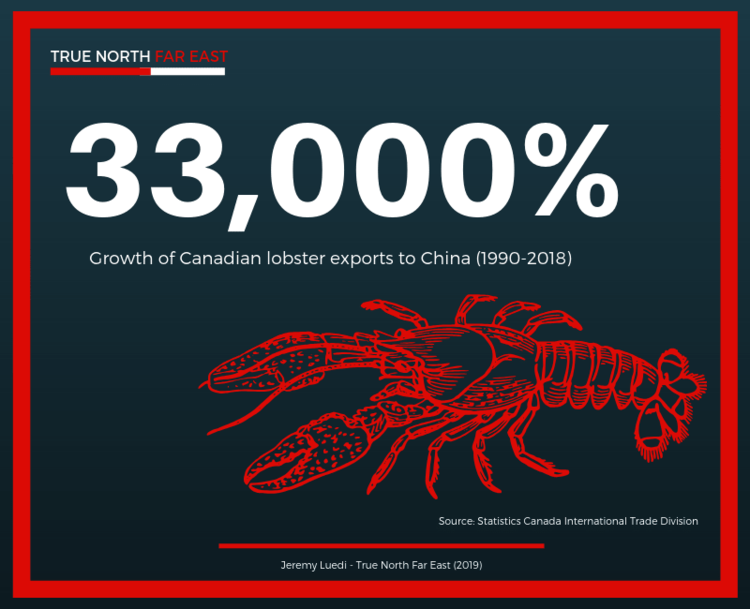
How to Sell Seafood in China?
Selling seafood in China requires careful planning and an understanding of the market dynamics. Here are some steps to consider when selling seafood in China:
E-commerce Makes Seafood More Accessible to Chinese Households
It has more advantages to selling products online in China rather than in the traditional way:
- Convenience & choice – Thousands of products are available online that are unlikely to be found in brick-and-mortar stores.
- Authenticity – Chinese buyers believe they are getting genuine products, as labeling issues and product substitution is a big problem domestically.
- Cold chain – Online retailers have massive logistical and economic heft in China, meaning the nation’s otherwise shoddy cold chain network is well served by digital sellers.
Tmall, Taobao and JD are the giants of e-commerce. They are the biggest platforms and also the bests in terms of quality and safety. Two important points in China.
Because these e-commerce platforms are very popular in China, it’s not easy to sell on those platforms. Most of them only accept brands that have already a significant presence and realized high sales in China. That’s why most of the spirits brands failed to sell on the giant platforms, Tmall, Taobao orJD.
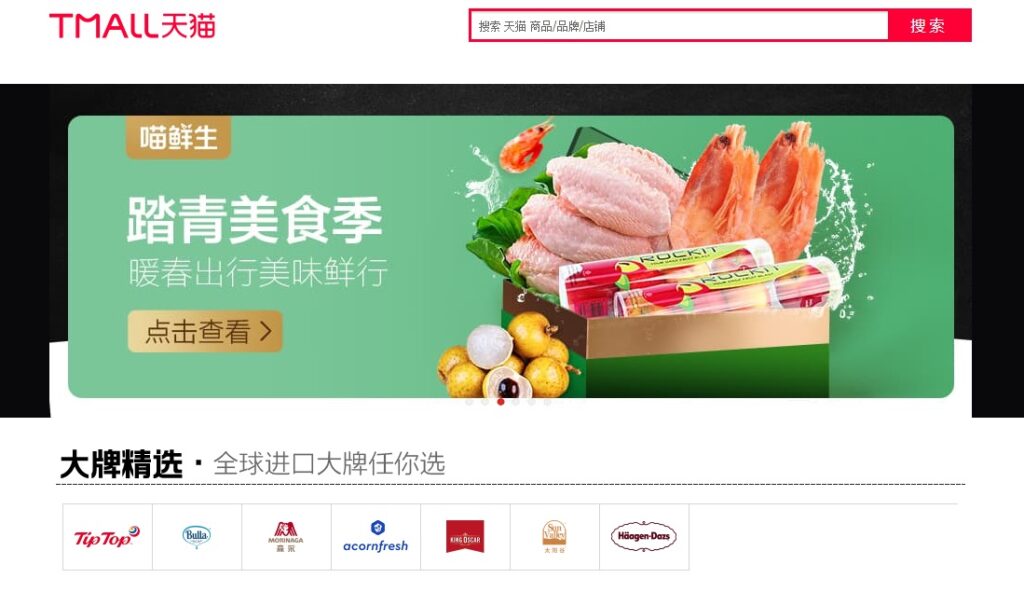
If you are a premium brand, you can try to sell on Tmall and JD because the 2 platforms want to keep a high ranking and only offer to their consumers’ famous brands and quality products. That’s why they are so selective.
If you are not very famous yet, the Wechat store also provides good e-shops. It’s a bit more accessible for beginners in this market.
Use Chinese Social Media to Promote Your Seafood Business in China
The most popular and used social networks in China are WeChat and Weibo. Therefore you can promote your seafood business through these two platforms which can push your business reputation online to a new high level if the methods are appropriate.
WeChat, developed by Tencent has more than 1.2 billion monthly active users. The social media platform is more than only a social media app. Tencent developed a lot of other services to adapt their content to users’ needs.
It’s also very convenient for brands to communicate with their target. The platform is known for its communication services in which users can send messages, share images and videos, voice call, and video call other users on a closed network. Having an official account on WeChat enables you to promote your brand via mobile or tablet.

Weibo is the second-most mass-used social networking site in China, with around 82% penetration rate across the country and more than 580 monthly active users. Weibo is very popular because it’s the first place where Chinese users can express themselves without suffering from government censorship. For the first time, Chinese people can speak about every subject and they love it.
The social microblogging network has also attracted more than 130,000 companies. It’s very important for brands to create their own Weibo Official Account, and get their account verified. If your account is signed as verified, you will have more followers because it’s legitimacy proof for Chinese users who know that the Weibo process to have a verified account is complicated and long but ensure the legitimacy of a brand.
More than 56% of Weibo users follow at least one brand on Weibo. In addition, on Weibo, you don’t need to be connected first to follow a brand.
Be Visible on Baidu through SEO
Due to 75% of the research in China being on Baidu, you need to have a good ranking on Baidu to be visible if you want consumers easily to find your business and buy seafood from you.
To develop your visibility on Baidu, you can use different solutions:
- Pay Per Click (PPC) or Search Engine Marketing (SEM): these solutions are very efficient but can be quite expensive in the long term.
- SEO is better for long-term strategies, and extremely efficient but asks you for more work. SEO is a long-term process, that requires writing articles and content using keywords, in order to increase presence on the web for search engines.
Baidu has its own websites and redirects 27% of its traffic to these sites: Baidu Zhidao (Q&A), Baidu Baike (Wikipedia), and Baidu Tieba (Forum). This means that, in order to promote your website on the Chinese internet, you also have to be active on these affiliating websites of Baidu.
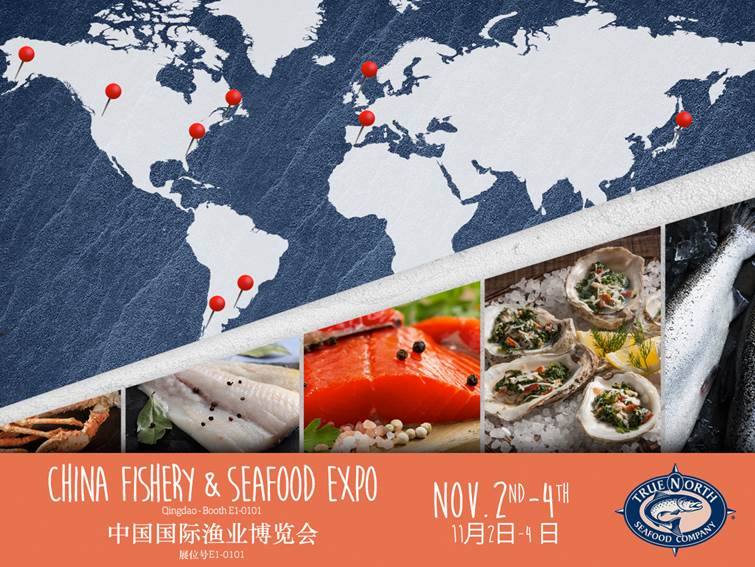
What to Consider When Exporting Seafood to China?
Exporting seafood to China involves careful planning and considerations. Here are some important factors to keep in mind:
Market Research
Conduct thorough market research to understand the Chinese seafood market. Identify the demand for specific seafood products, consumer preferences, regional variations, and market trends. Consider factors such as pricing expectations, cultural preferences, and the competitive landscape.
Compliance and Regulations
Familiarize yourself with Chinese import regulations and food safety standards. Ensure that your seafood products comply with Chinese labeling, packaging, and quality requirements. Stay updated on any changes in regulations related to import permits, certifications, and documentation.
Product Quality and Safety
Chinese consumers value high-quality and safe seafood. Implement rigorous quality control measures throughout the supply chain to ensure freshness, proper handling, and compliance with international food safety standards. Consider obtaining relevant certifications such as HACCP or BRC to enhance credibility.
Traceability and Sustainability
Chinese consumers are increasingly concerned about the origin and sustainability of seafood. Provide transparent information about the sourcing, production methods, and sustainability practices related to your seafood products. Implement traceability systems that allow for the tracking of products from harvest or catch to the end consumer.
Partnering with Importers/Distributors
Identify reputable importers or distributors in China with expertise in seafood imports and established distribution networks. Establish strong relationships based on trust, reliability, and shared values. Work closely with your partners to ensure proper handling, storage, and distribution of your seafood products.

Packaging and Labeling
Optimize your packaging and labeling to appeal to Chinese consumers. Consider incorporating Chinese translations, relevant product information, and attractive designs that resonate with the target market. Ensure that packaging materials are suitable for long-distance transportation and adhere to Chinese import requirements.
Cultural Considerations
Understand Chinese culinary traditions and preferences. Adapt your product offerings, presentation, and marketing strategies to suit local tastes. Consider providing cooking instructions, recipes, or promotional materials that resonate with Chinese cooking styles and flavors.
Pricing and Competitiveness
Determine competitive pricing based on market research, production costs, and distribution expenses. Consider factors such as import duties, taxes, and transportation costs when setting prices. Assess your value proposition and differentiation strategies to effectively compete with both local and international seafood suppliers.
Market Entry Assistance
Consider seeking assistance from market entry specialists, trade organizations, or local experts with experience in exporting seafood to China. They can provide valuable insights, guidance, and support in navigating the complexities of the Chinese market.
By carefully considering these factors and conducting thorough research, you can enhance your chances of successful seafood exports to China. Adapt your strategies to meet the specific needs and preferences of Chinese consumers, while complying with regulations and ensuring product quality and safety.
Seafood Company in China: True North GMA Case Study
Since there is a large potential market for seafood in China, GMA is eager to cooperate with any seafood business that wants to open its Chinese market. Thus GMA worked with the company “True North Seafood” and help it to develop a strong marketing strategy with the main target the Chinese Consumers.
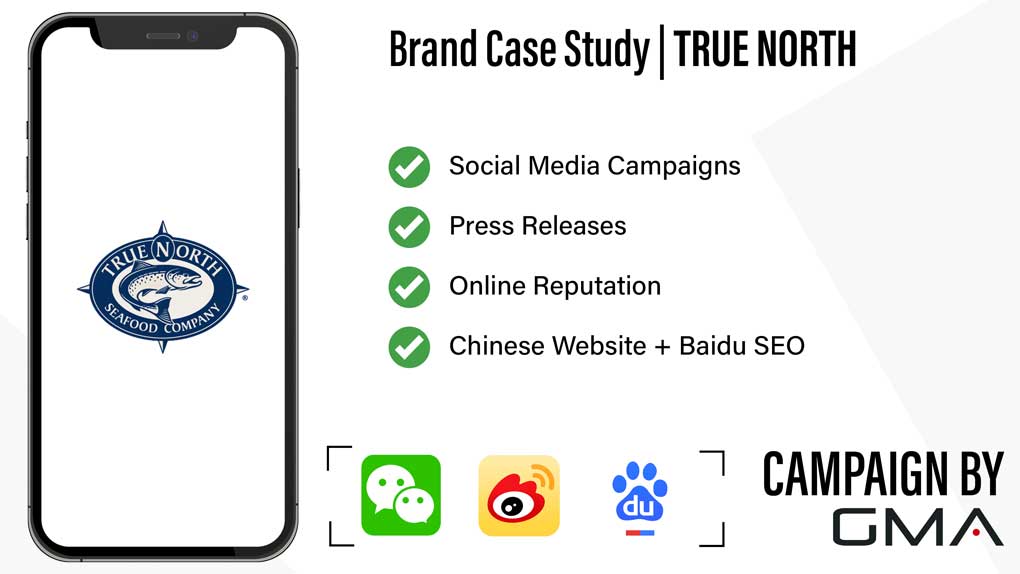
True North Seafood is a long story about the production of fresh seafood, with the main obsession for delicious seafood. True North Seafood is a part of the Cooke Family of Brands. For True North Seafood, the ocean is more than a source of seafood, it’s a source of pride.
We thought the best solutions for promoting their business are:
- Social Media Campaign(Wechat+ Weibo)
- Press Release
- Online Reputation
- Chinese Website
Eventually, we got a great result. Its Weibo account has increased by +1600 new followers after the first month and +12k new followers on WeChat. And we made its business to the 1st page on Baidu and increased 80% of Exposure in total.
We Can Help You Export Seafood to China!
Gentlemen Marketing Agency is specialized in digital marketing in the Chinese market. Over 10 years, our team of Chinese and foreign experts gained the necessary experience and know-how needed to succeed in the Chinese market.

We offer cost-effective solutions, depending on your goals, needs, and budget. Some of our services include:
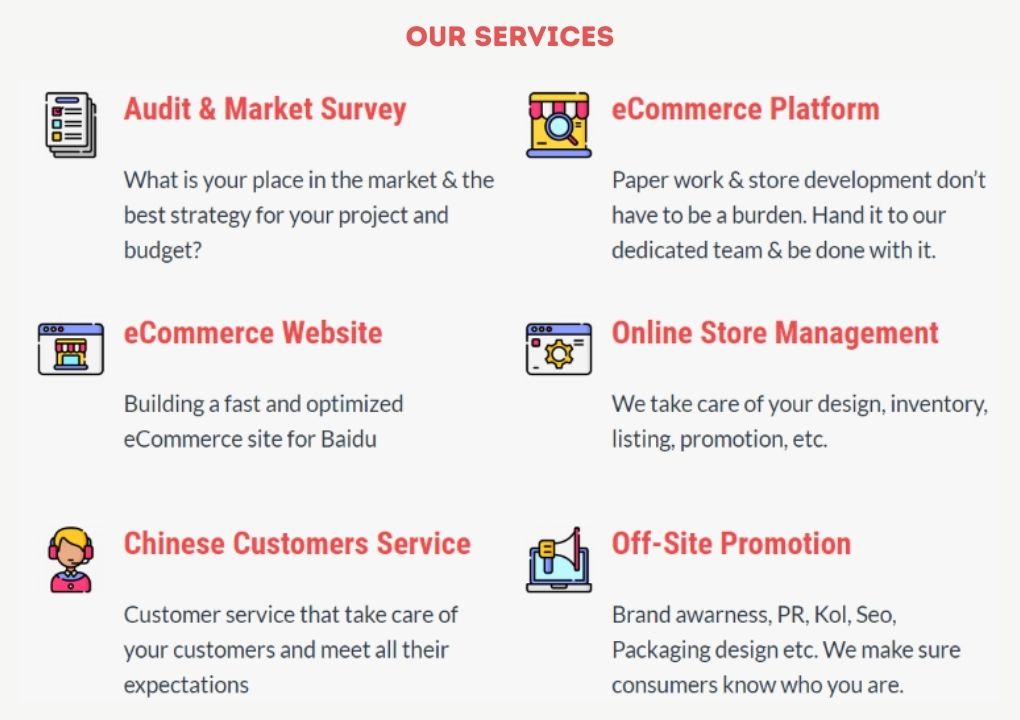
Don’t hesitate to leave us a comment or contact us to discuss your options in the Chinese seafood market. We offer a free consultation with one of our experts, that will learn about your brand and understand your needs and hopes for China entry. Let’s keep in touch!


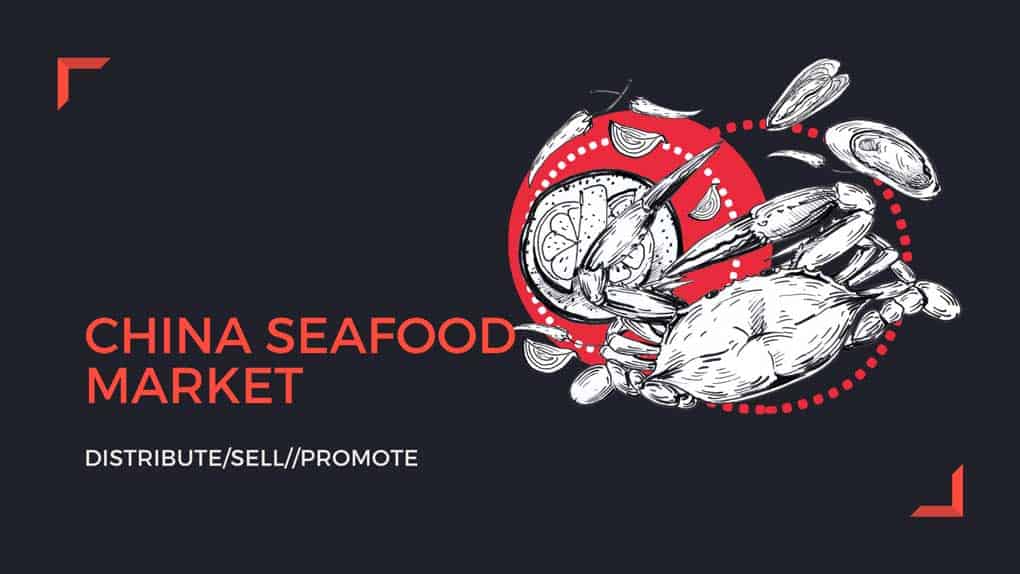






alibaba.com is show chinese suppliers to the world
51export-to-china.com introduce worldwide supplier to China
Chinese Woman sorting fish at Aberdeen Fish Market, Hong Kong, China. In China, seafood has overtaken pork as the nation’s most popular protein Chinese e-commerce giant JD.com saw its online sales of imported seafood grow 14-fold in 2016. Overall online seafood sales f
I’m looking somebody to help me sell sea food to China market
How to export seafood to China? I mean can you export Seafood from North America to China via internet? Any legislation for this specific Product?
Looking partner who are already selling in different platform.
Will concentrate the supply chain only
Hiii sir
I am from india
And i am the business man in india of fish exporting . So…..
If any of you want the seafoods products in wholesale so contact us…..
And now i have the stock of pompret with 30 ton so any of you want to buy contact me
Hello,
We selling seafood from South Africa to all around the world.
Please get in touch.
Ahmed for Stan in S.A
Hello,
We selling seafood from South Africa to all around.
Please get in touch with me.
Regards.
Ahmed for Stan in S A
Looking for a seafood distributor to luxury hotels in China. We source canned abalone.
Hello,
we are a Chinese importer companies and we are interested to import and resell foreign brand of seafood. Contact me please
Good day,
We are Fishmaw producers and suppliers based in Suriname (South America).
We are able to supply both Frozen and Dried Fishmaw.
Currently we have available:
Let us know if you are interested and we will send you all the details and prices.
Thank you
Hi, I am a supplier of Seafood from South America.
David H.
Hi matt, I would like to engage in doing sea food businesses with you, I’m from Papua New Guinea..
we are indonesia seafood exporter, especially mangrove crab . Please send inquaries.
nous vendons des langoustes vivantes rouge et noires (jasus frontalis) du chili sur shanghai nous recherchons des partenaires
We will contact you (in French)
Hi Matt. We export live lobster to China. If interested contact me on WhatsApp